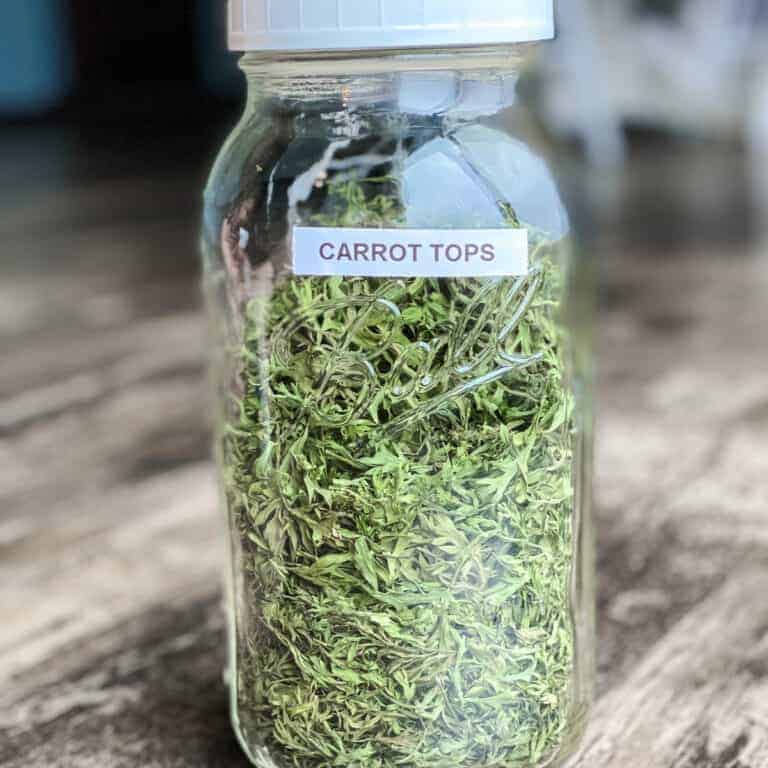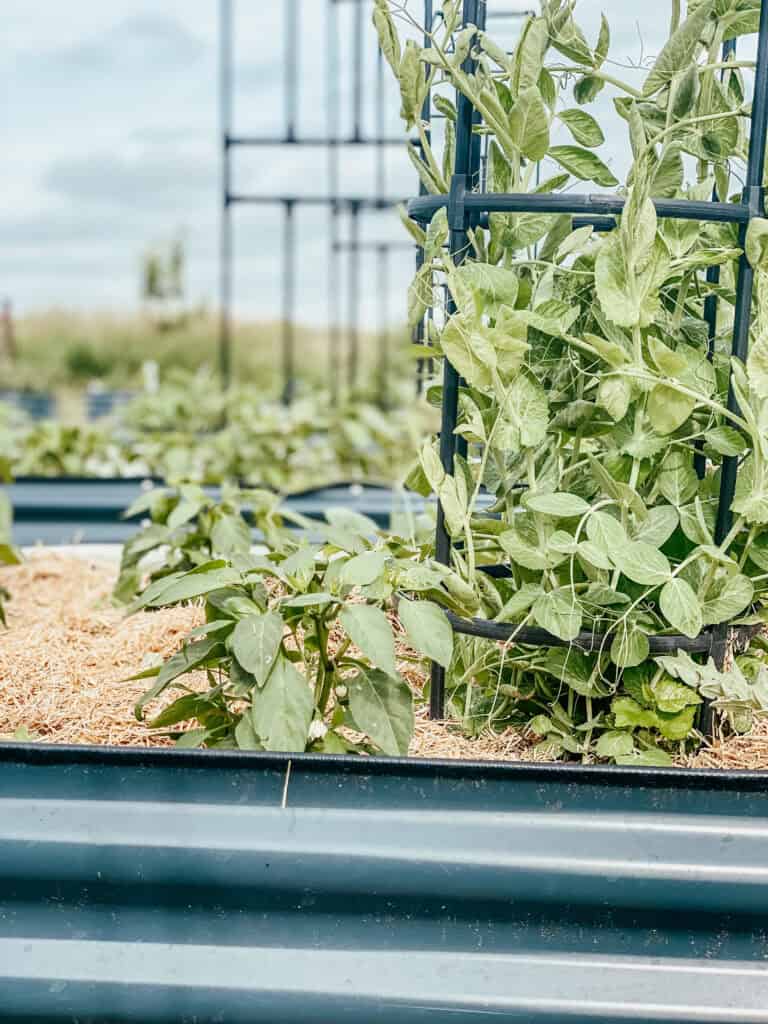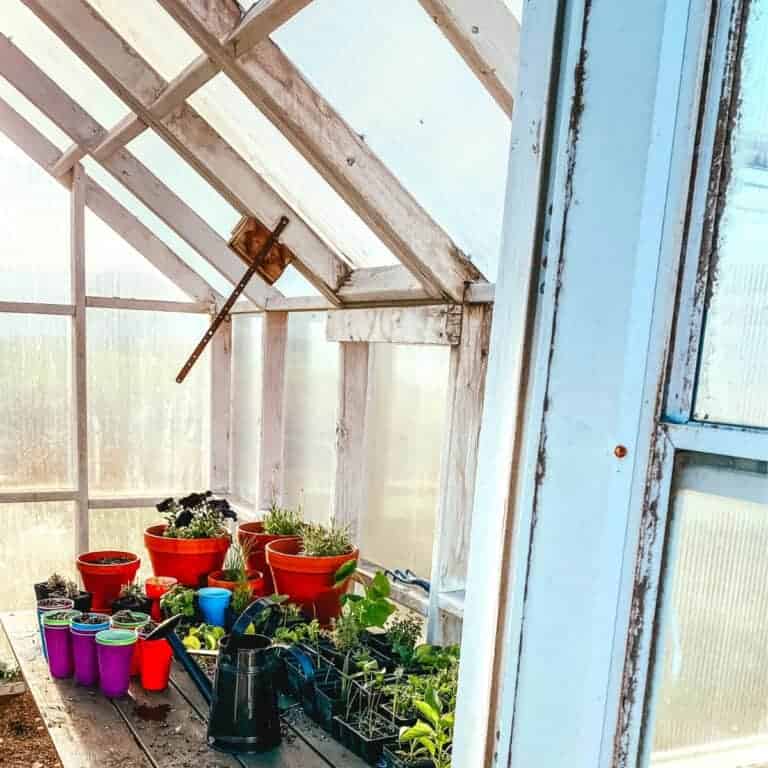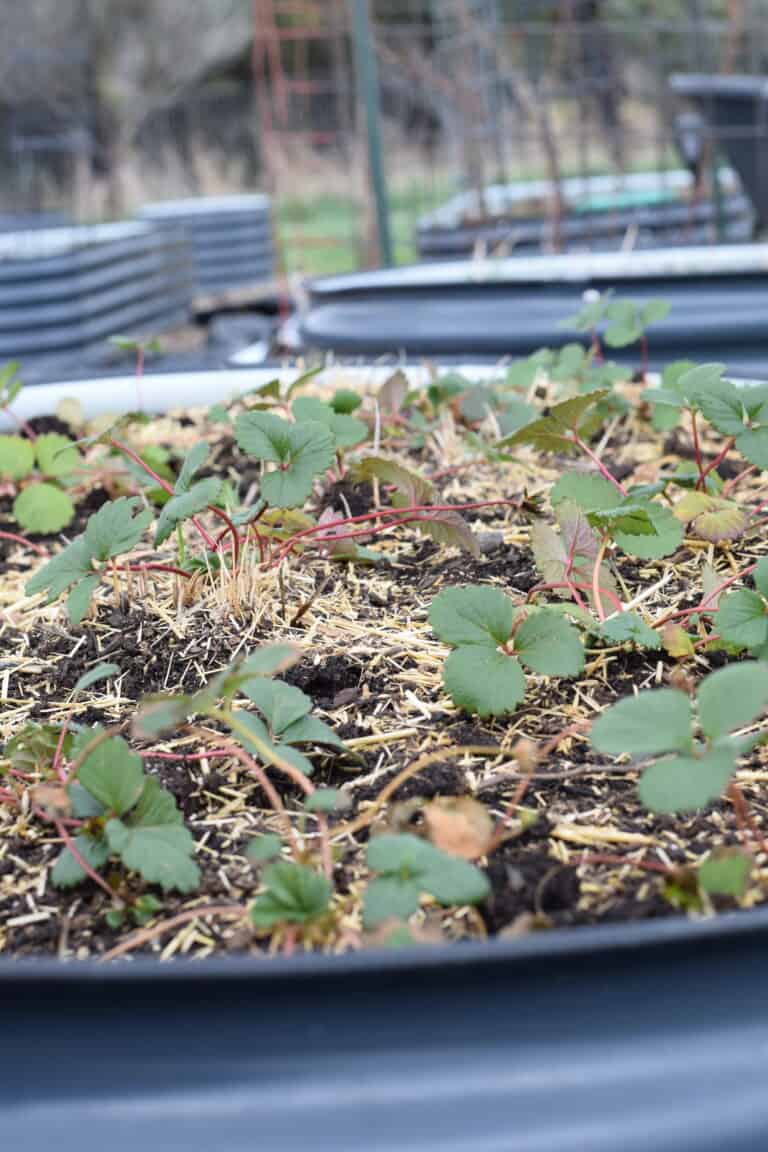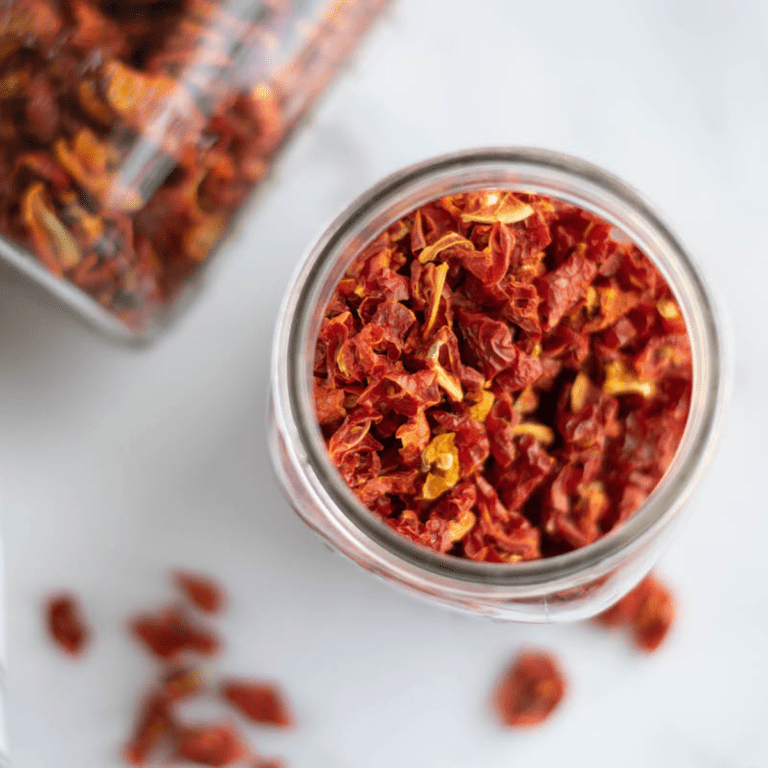How to Plan a Kitchen Garden That Actually Feeds Your Family
There’s something deeply satisfying about stepping outside your door and gathering fresh ingredients for dinner. A kitchen garden — thoughtfully planned around your family’s needs — can do more than just supplement your meals.
It can feed your family, simplify your grocery shopping, and help you live more seasonally and simply. Which is truly a blessing and super satisfying!
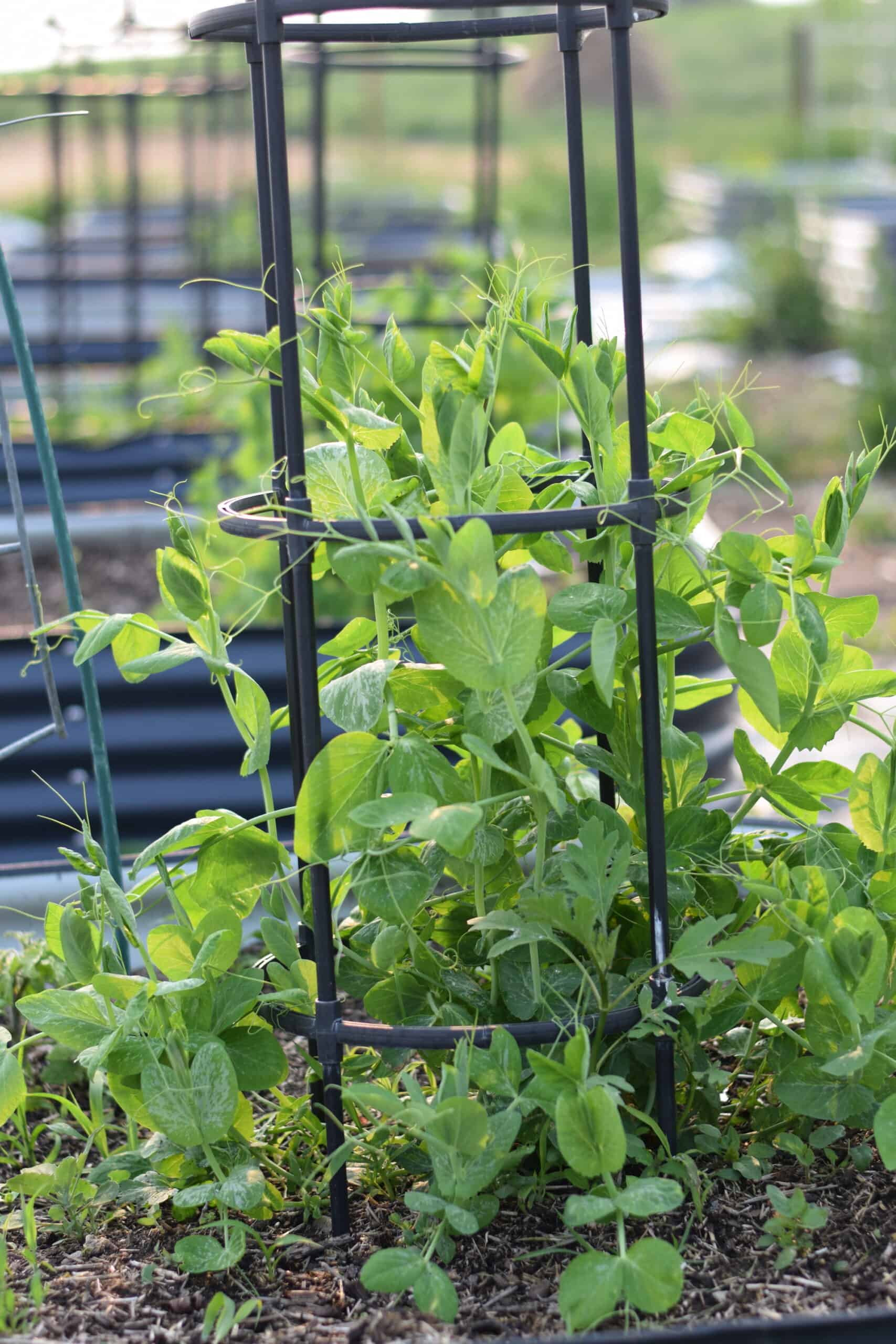
How to Plan a Kitchen Garden
So, how do you make sure your garden is actually productive — and not just pretty? Let’s walk through a practical guide to planning a kitchen garden that’s not just inspiring, but truly nourishing for your household.
Let’s dive in to some practical tips for getting your kitchen garden established to actually feed your family.
Start with Your Family’s Needs
Before you plant a single seed, take inventory of what your family actually eats. A garden that feeds your family starts with the foods you cook the most. I know fun or trendy variety of plants is well, fun. But realistically, are these varieties something that you and your family enjoy eating?
Make a quick list of the vegetables, herbs, and fruits that regularly appear in your meals. Think about staples like:
- Salad greens
- Tomatoes
- Onions and garlic
- Carrots and potatoes
- Zucchini or winter squash
- Bell peppers or hot peppers
- Green beans
- Fresh herbs like basil, parsley, thyme, oregano, and dill
Take it a step further and jot down a few weekly dinners you make on repeat. What vegetables or herbs do they require? Those are your core crops and what you should think about adding to your kitchen garden plans.
🌿 Pro tip: Track your family’s meals for a week or two and note which ingredients you use most. That’s your custom planting list.
Know Your Growing Space and Climate
Next, evaluate the space you have to work with. Whether you’re planting in raised beds, in-ground rows, or a few large containers, your garden can still be productive with a little planning.
Btw, I have a category on raised bed gardening, you’ll want to check out!
When planning your garden, make note of:
- Sunlight – Most veggies need at least 6–8 hours of full sun.
- Soil – Healthy, fertile soil is key. Add compost and organic matter as needed. Also be sure not to overly amend your soil — use a test kit to know if you need amendments.
- Water – Plan for easy access to water (hand watering, drip irrigation, or rain catchment).
And don’t forget your growing zone! Knowing your USDA Zone (Zone 5 for us) helps you choose the right varieties and plan your planting dates. You can look up your zone here.
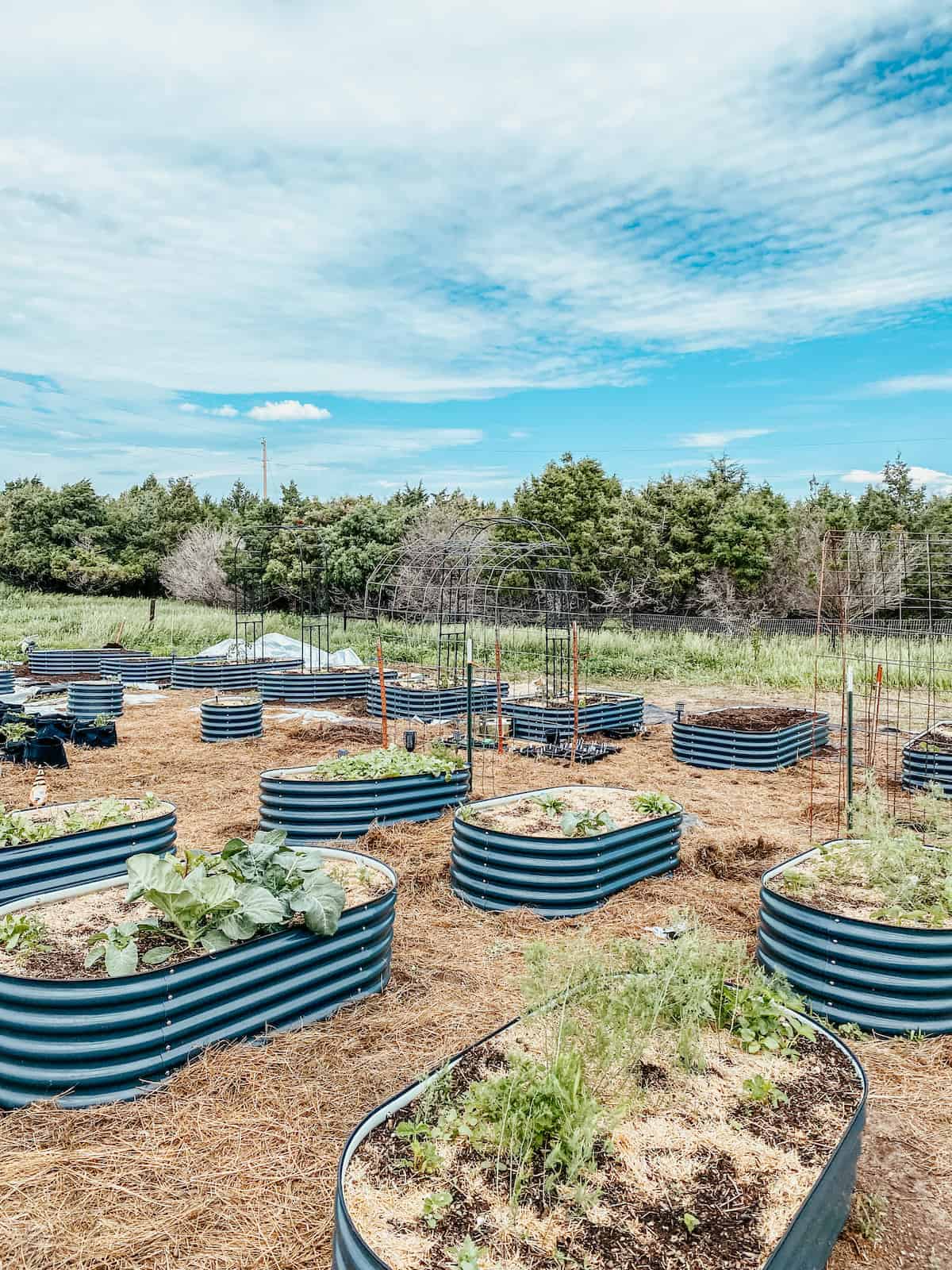
Choose Productive + Multi-Use Crops
The goal of a kitchen garden is to grow a lot of food in a small space. So it helps to pick high-yield crops that you can use in multiple meals.
Here are a few homestead favorites:
- Tomatoes – Fresh, canned, sauce, salsa — a must-have! This is our favorite creamy pasta sauce that uses a lot of cherry tomatoes!
- Greens (lettuce, spinach, kale) – Quick growers and cut-and-come-again.
- Zucchini & summer squash – Abundant producers, great for sautéing, baking, and preserving.
- Green beans – Easy to grow, high yield, and great for canning.
- Herbs – Add flavor and healing benefits, easy to grow in small spaces and in raised beds.
You can also add a few flowers like marigolds, calendula, or nasturtiums to help attract pollinators and repel pests.
I’m a big fan of adding beauty with the practical in the garden. Plus, it draws in the beneficial pollinators too! Some of our favorites are:
- zinnias
- sunflowers
- cosmos
- marigolds
- bachelor’s buttons aka cornflowers
🌻 For more flower varieties of flowers and links to our favorites, check out our post on creating a cut flower garden in a raised bed.
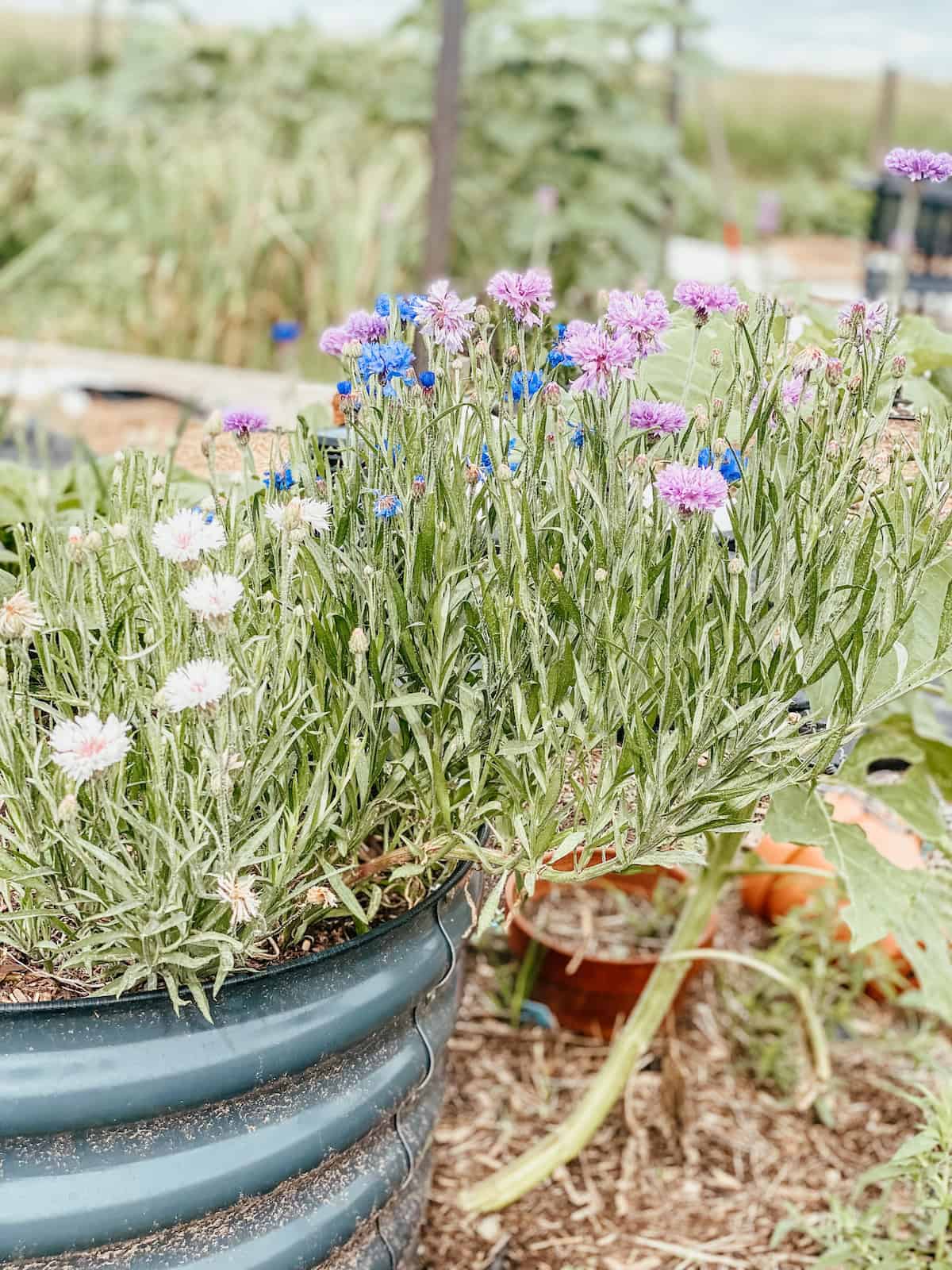
Map Out Your Garden Layout
Before digging in, sketch your garden on paper or use a planner — I like to use a simple moleskine notebook with dot grid layout for sketching out my plans. Organizing your layout ensures that every inch is used wisely.
Keep in mind:
- Plant height – Put tall crops like tomatoes or trellised cucumbers in the back (north side).
- Sunlight needs – Group full-sun lovers together.
- Water needs – Plant thirstier plants together to avoid overwatering those with lesser needs and keep access to your water source nearby.
- Crop families – Rotate plant families each year to protect soil health.
🥕Pro tip: Using raised beds? Keep pathways wide enough to kneel and harvest comfortably — about 18-24 inches.
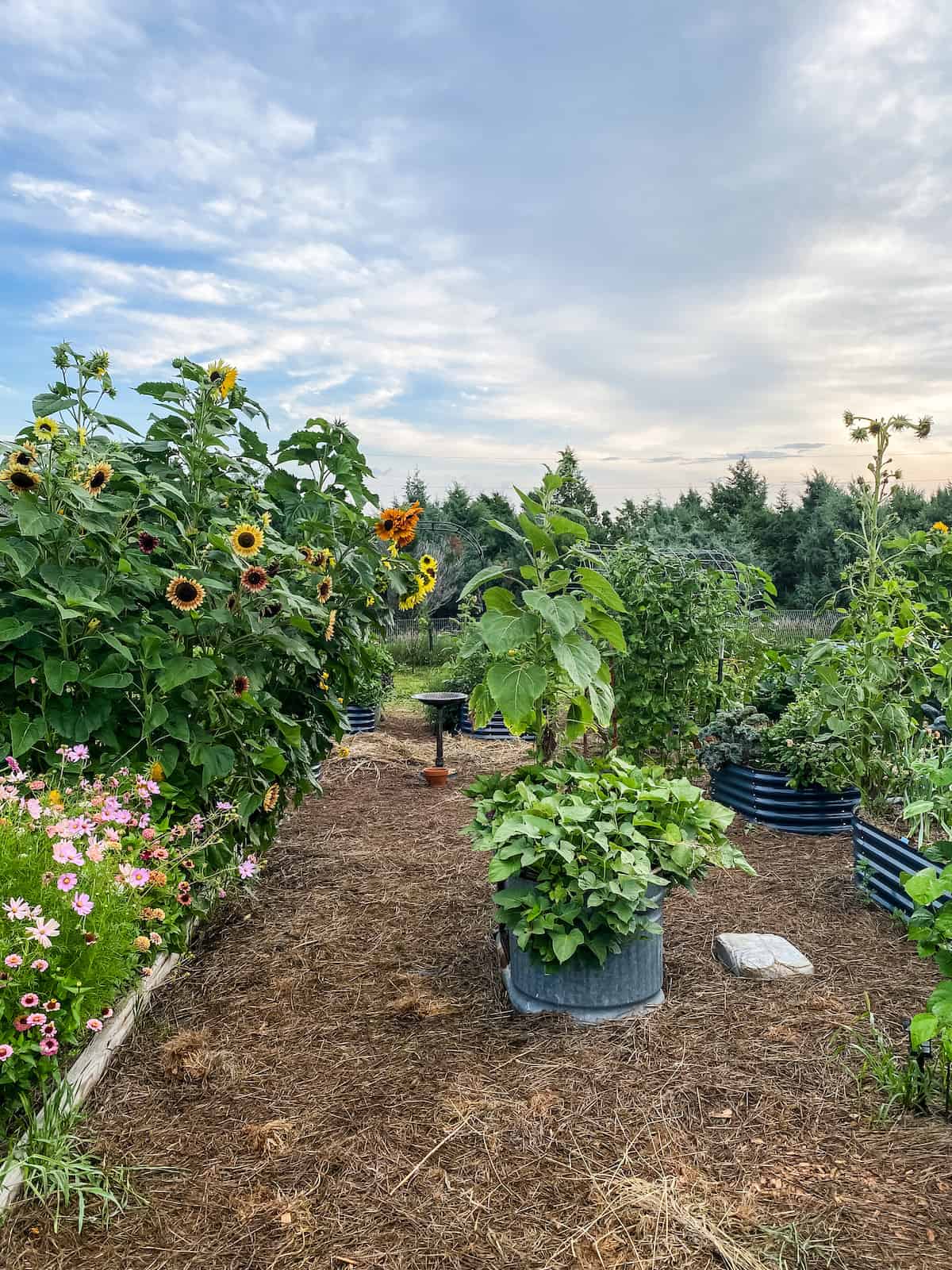
Think Beyond Summer — Plan for Year-Round Harvests
Most people only think about the summer garden. But if you plan right, you can grow food nearly year-round — even in cooler zones.
A few ideas for season extension:
- Spring: Spinach, peas, radishes, lettuce, green onions
- Fall: Carrots, kale, broccoli, beets, chard
- Winter (with protection): Cold-hardy greens under row covers or a small hoop house
Also, you may want to consider succession planting — sowing a second crop once the first finishes — which is also key to continual harvests.
For example, follow early lettuce with bush beans. Or plant more radishes after harvesting the first crops. If you’d like to have salad continually throughout the growing season, stagger plantings out every week or two.
→ Check out our fall garden planting guide here.
Grow Enough to Preserve
If you’re dreaming of shelves lined with home-canned tomato sauce or jars of pickles, plan for extra.
Estimate how much your family uses across the year:
- 1–2 tomato plants per person for fresh eating
- 4–6 plants per person if you want to preserve sauces or salsa
- A full bed of green beans for freezing or canning
- A few extra rows or beds of herbs to dry or infuse into oils
This can take some trial and error and testing to find what you’re actually eating each year. And some years do better than others! Planning ahead means you’re not left scrambling come harvest time.

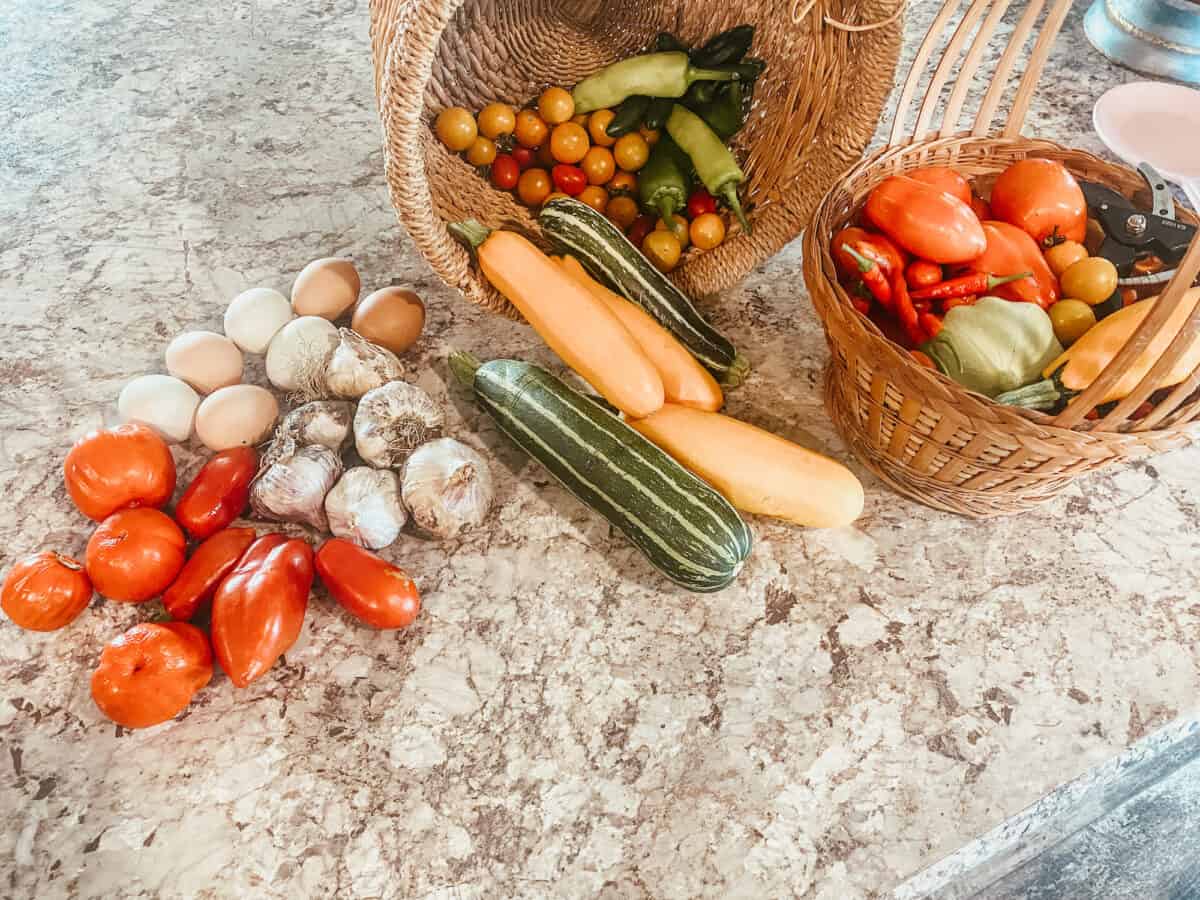
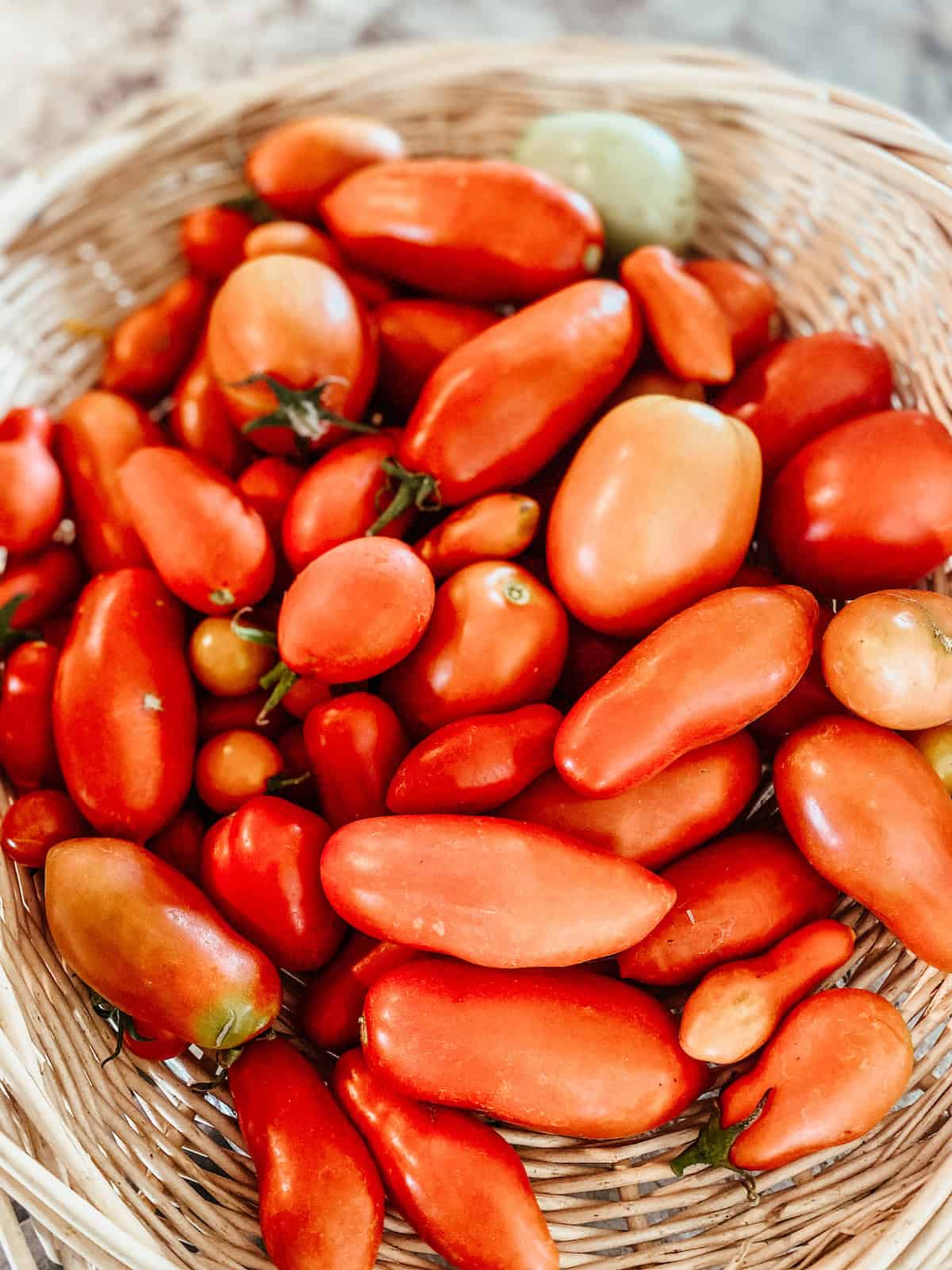
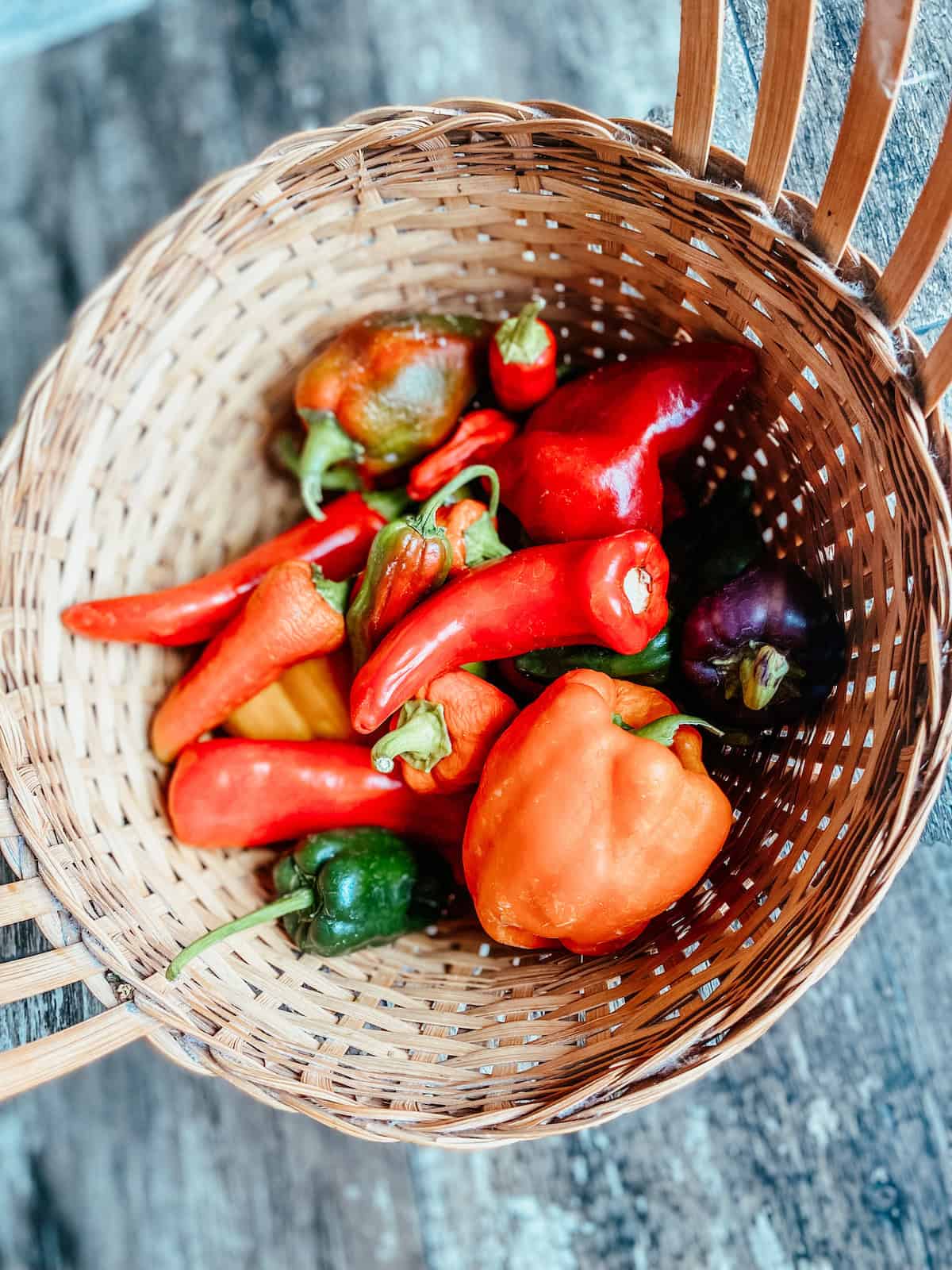
Keep it Simple and Manageable
Don’t try to grow everything in your first year. It’s better to have a smaller, well-tended garden than a sprawling plot that becomes overwhelming.
We’ve been gardening at our new home for going on 5 years. And many years at previous homes before that. But we are still learning. The garden is a continuous teacher and we must be humble students to learn many valuable lessons over many years.
Start with 5–10 core crops your family loves. Focus on learning how each plant grows, when to harvest, and how to keep pests at bay naturally. As your confidence grows, so can your garden.
🍅 Pro tip: Build in 10–15 minutes a day for garden upkeep. A little each day goes a long way! And there’s so many health benefits for taking the time to walk through the garden each day.
“There is no gardening without humility. Nature is constantly sending even its oldest scholars to the bottom of the class for some egregious blunder.”
— Alfred Austin
Add a Touch of Joy and Beauty
Finally, don’t forget that your garden should delight you. Include things that bring joy — edible flowers, your favorite tea herbs, or a cozy bench under a tree. Garden lights have been our favorite addition to create a beautiful atmosphere outdoors.
There’s wonder to be found in a kitchen garden — not just in the harvest, but in the quiet, slow work of growing.
Our garden is my favorite space to sit and have a cup of coffee in the mornings or relax in the evenings. Full of beauty — plus, the sounds of goats bleating, ducks quacking and a rooster crowing. Yours should bring you joy, too!
→ Check out creating whimsical gardens for children for more ideas.
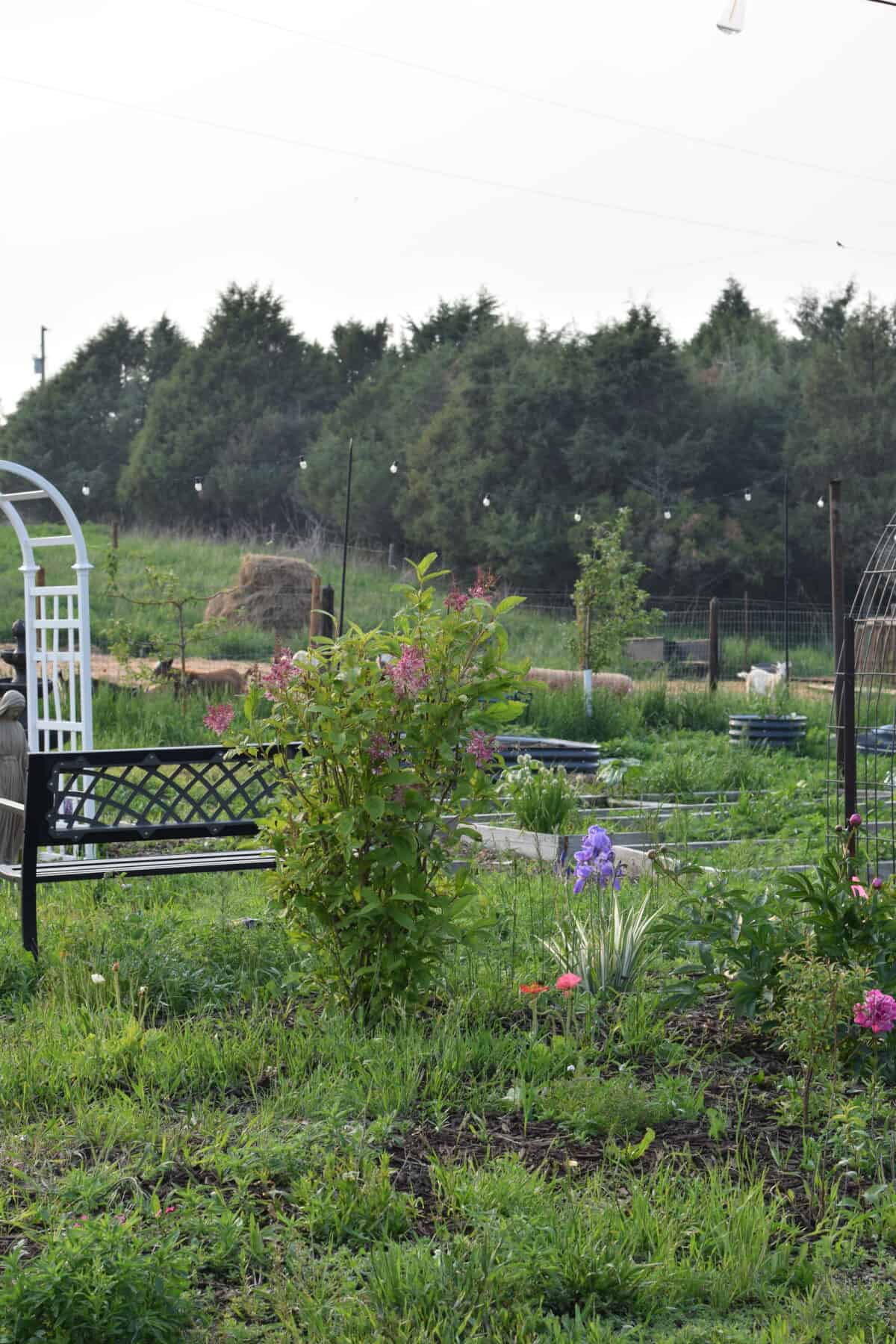
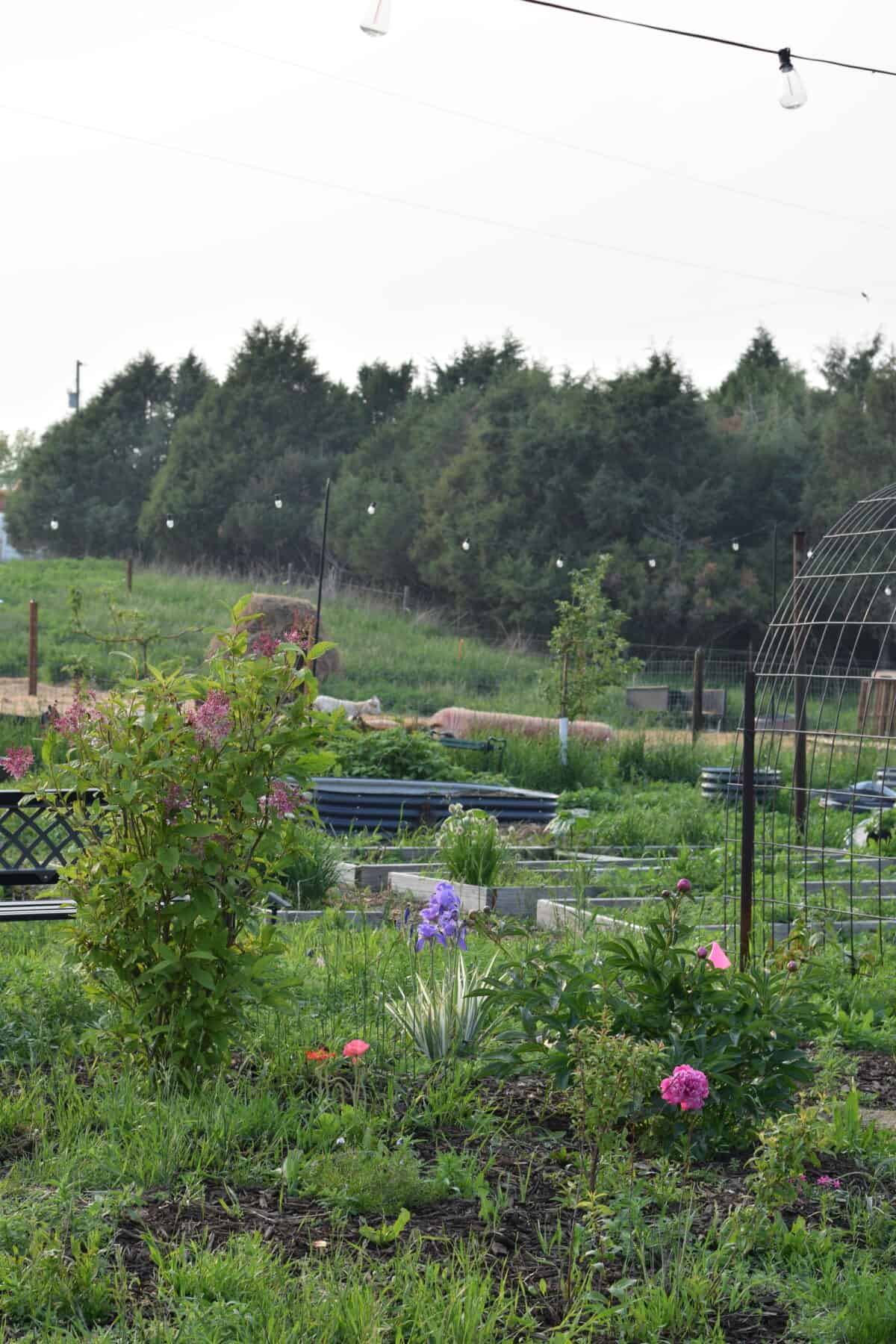
“A garden is a grand teacher. It teaches patience and careful watchfulness; it teaches industry and thrift; above all it teaches entire trust.”
— Gertrude Jekyll
🍓 Final Thoughts
A kitchen garden that feeds your family isn’t about perfection — it’s about intention. By starting with what your family eats, making the most of your space, and planning for continual harvests, you can grow a garden that truly supports your homestead kitchen.
Whether you’re a seasoned gardener or just starting out, remember: every seed planted is a step toward greater self-sufficiency and simplicity.
Let’s chat…
→ What are your favorite must-grow crops? Share your kitchen garden goals in the comments below.


